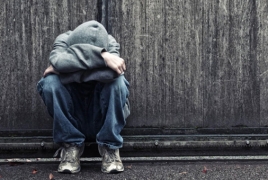
Childhood and adolescence are critical periods for both physical and mental development. Maintaining mental health during this time is essential for lifelong well-being and overall health.
According to the U.S. Centers for Disease Control and Prevention (CDC), approximately 20% of adolescents experience mental health problems annually. Half of all mental disorders begin by age 14, and 75% by age 24. The CDC also notes that 10% of children and youth aged 5 to 16 have a clinical diagnosis of mental disorders, yet around 70% of affected adolescents receive no proper treatment.
Data from the Heratsi National Research Center for Health Programs at YSMU indicates that 1 in every 7 children and adolescents (aged 10–19) is likely to experience mental health disorders, commonly manifested through anxiety, depression, and behavioral problems.
As one-third of mental disorders emerge before age 14, and half before 18, early intervention is crucial for the full development and potential realization of young people.
Globally, 15% of adolescents aged 10 to 19 live with mental disorders, representing 13% of the total disease burden in this age group. In the U.S. in 2016, nearly 20% (17.4%) of children aged 2 to 8 had mental, behavioral, or developmental disorders. During 2018–2019, 15% of adolescents aged 12–17 reported experiencing a major depressive episode, 37% frequently felt sad or hopeless, and nearly 20% seriously considered suicide.
U.S. studies show that between 2016 and 2020, depression rates among children aged 3 to 17 rose by 27%.
Boys aged 2 to 8 are more often diagnosed with mental, behavioral, and developmental disorders than girls. However, since 2009, depression among girls aged 12–17 has risen sharply and consistently. Children in families living below the poverty line are especially vulnerable — 22% of them have some form of mental, behavioral, or developmental disorder. Age and socio-economic status significantly influence a child's likelihood of receiving treatment for anxiety, depression, or behavioral issues.
According to Armenia’s Statistical Committee, by the end of 2023, 1,753 patients aged 0–14 and 473 aged 15–17 were registered with mental disorders.
In 2023, there were six recorded cases of mental and behavioral disorders related to psychoactive substance use among 15–18-year-olds in Armenia, while no such cases were reported for the 0–14 age group.
Mental health challenges are now a leading cause of disability and adverse life outcomes among youth, even predating the healthcare crisis brought on by the COVID-19 pandemic. Childhood mental health includes the ability to reach developmental and emotional milestones, build social skills, and cope with challenges.
Children who are physically and mentally healthy tend to have a higher quality of life and function effectively at school, home, and within their communities.
“Mental health is not simply the absence of mental disorders; it’s also the capacity for well-being and thriving,” notes the Heratsi center.
A child’s ability to thrive is influenced by factors such as family and societal relationships, access to opportunities, and environmental conditions. Children can still experience well-being even with mental health challenges, particularly when they have access to effective treatment and a stable, nurturing environment.
Childhood and adolescence are the most vital periods for mental development — a time of rapid brain growth. Youth quickly acquire social and emotional skills that shape their future capacity to adapt, grow, and manage life’s circumstances.
Healthy development means that all children, including those needing special care, can grow up in families that meet their social, emotional, and educational needs. The quality of relationships and environment where children grow up determines their well-being and development.
Safe, stable, and nurturing relationships and environments form the foundation for a child’s mental and physical health, enabling them to grow and thrive.
Early negative experiences — whether at home, school, or online — such as abuse or overcontrol by caregivers, cohabiting with someone who has mental health issues, or lacking secure housing and food, significantly increase the risk of developing mental health disorders, the Heratsi center reports.

